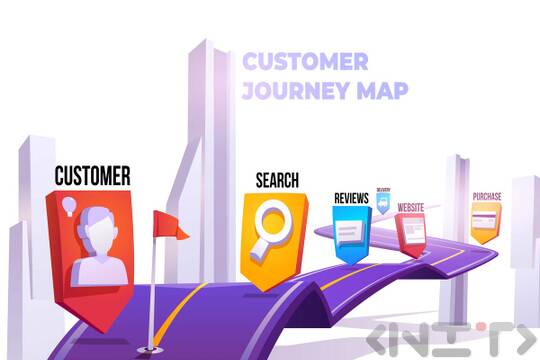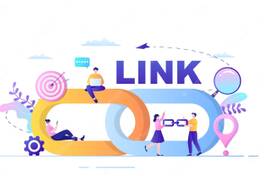
What is customer journey
The customer journey, also known as the "customer journey," is a sequence of phases and interactions that customers go through while getting to know a brand, product or service. This journey includes everything the customer does in researching, evaluating, buying and using the product or service. It serves to understand customer needs, preferences and experiences, providing a holistic picture of their interactions with the brand and creating opportunities to optimize those experiences for the benefit of customers and the business.
The customer journey and its mapping provides invaluable information for marketing to work on increasing brand awareness and advertising on social media, search engines, paid ads online and offline.
Customer Journey Mapping
Customer Journey Mapping is a strategic tool that enables businesses to understand and optimise their customers' experience through the different phases of their journey - from their initial introduction to a product or service through to purchase completion and after-sales support.
This process involves data collection and analysis, observation and conversations with customers to understand how they interact with the brand and what their needs, challenges and expectations are at different stages. The result is a visualization of the customer journey in the form of a diagram or map that provides a holistic view of the customer experience.
For businesses, customer journey mapping is essential. It allows them to:
Understand their customers better: Through customer journey analytics, businesses can gain a deep understanding of how customers interact with them and what they want.
Optimize the customer experience: By understanding the customer journey, businesses can identify bottlenecks and improve them, leading to a better customer experience.
Create personalized strategies: Knowing the customer journey allows companies to create personalized marketing strategies and messages that target specific customer phases and needs.
Increase customer loyalty: when customers feel understood and satisfied with the experience, they are more likely to become loyal customers and share positive experiences with others.
Customer journey mapping is a tool that not only helps businesses improve their strategy and customer experience, but also create stronger and more productive relationships with their customers, which can have long-term benefits for company success and growth.
In today's business world, understanding and optimizing the customer journey is key to any company's success. This includes looking at the different phases that customers go through, from their initial introduction to the brand through to purchase completion and after-sales support. In this article, we'll look at how Google and related tools can be used to map and optimize the customer journey, as well as what the future trends and challenges are.
Phases of the customer journey
The customer journey includes several key phases that customers anticipate:
Awareness: this stage focuses on the initial introduction of customers to the brand's products or services. Google My Business and Google Maps are powerful tools to facilitate this process, providing an easy way for customers to find your business location and information.
Comparing options (Consideration): this stage involves comparing your proposals with those of your competitors. Google Ads campaigns can be used to drive customers to your products and services and create interest.
Purchase: At this stage customers make the purchase. Optimization of the website and payment process is key, as is integration with Google Pay or other payment methods to facilitate transactions.
After-Purchase: Customer support after the purchase is essential. Google My Business can be used to update contact information, hours of operation, and provide reviews and feedback.
Offline and online customer journey optimization
Customer journey optimization requires attention to both online and offline scenarios.
Physical contact: if you have a physical store or office, create a pleasant and easy to navigate environment. Train staff to be responsive and informative. Integration with Google Maps and Google Street View allows customers to find your store and virtually explore the location.
Online presence: make sure your website is easy to use and mobile friendly. Constantly update content and provide information about products and services. Use tools like Google Analytics to analyze traffic and user behavior.
Integration with Google My Business and Google tools
Google My Business provides an effective way to showcase your enterprise and manage the customer experience. Complete your profile with opening hours, address, photos and reviews. This will improve your business' visibility in Google search and maps.
Google Maps, Google My Business, and other Google tools provide powerful analytics and optimization capabilities for the customer journey. Here's how they can be used:
Local visibility and orientation: Google Maps allows businesses to be easily found by users in any location. This streamlines the initial stage of the customer journey, with potential customers finding your location and contact information.
Google My Business for up-to-date information:Google My Business gives you the ability to manage your business information, including hours, contacts and photos. This makes it easy for customers to find and find out more about your business.
Reviews and ratings: tools like Google My Business allow customers to leave reviews and ratings. Analyzing this feedback can provide insights into how satisfied customers are at different stages of their journey and how it can be improved.
Advertising and marketing with Google Ads: With Google Ads, you can target your ads to specific locations and keywords, helping customers find your products or services when they search for them.
Data analytics: use Google's analytics tools to track how users interact with your online and offline resources. This analysis provides valuable data for customer journey optimization.
With these Google tools, businesses can refine their understanding of the customer journey and deliver a better, more personalized customer experience by engaging and optimizing across all phases of the customer journey.
Content and marketing strategies
Content and marketing strategies should be focused on the different phases of the customer journey. Use SEO to optimize your website for keywords related to each phase. Prepare content that addresses the questions and needs of customers at each step of their journey.
Tracking and metrics
Collecting and analyzing data to understand how customers interact with your business from the beginning to the end of their journey is like analyzing the path they follow when they interact with you. Here's how to do it:
- Identify touch points: start by identifying all the touch points where customers can touch your business - this could be your website, social media, store, customer calls and more.
- Data collection: collect data for each of these points. For example, analyze your website with tools like Google Analytics to see how many visits it gets, where visitors are coming from, and what they're doing on the site. Also collect data on customer queries and reviews.
- Analyse behaviour: review the data to understand how customers behave at each touchpoint. For example, do you see many visitors leaving your website on a particular page? This analysis can show where customers are experiencing problems or difficulties.
- Use customer feedback: customer reviews and comments are a great way to understand their opinions and needs. Read reviews, monitor social media and conduct surveys to get first-hand information.
- Create a Customer Journey: Based on the information collected, create a picture or diagram of the path that customers follow - from the first contact with you to the final step (e.g. purchase).
- Identify weak spots and opportunities for improvement: analyze this route and find the places where customers encounter problems or disruptions. These are the points you need to optimise and improve to make the customer journey easier.
- Implement improvements: once you have identified the weaknesses, implement the improvements and monitor customer reaction. Continuous improvement is the key to customer journey optimization.
By following this process, you will be able to understand how customers interact with your business and how you can make this process smoother and more enjoyable for them.
To evaluate the success of customer journey mapping, use different metrics. These include conversions, number of new customers, customer satisfaction rates, and more. Constantly analyze the results and adjust your strategy accordingly.
Examples and case studies
Starbucks uses its mobile app and Google Maps integration to improve the customer journey. Users can easily find the nearest coffee, pre-order drinks and collect reward points. This example illustrates how integration with Google can make the customer journey more convenient and enjoyable.
Zappos uses data from Google Analytics and Google Ads to create personalized offers and messages for its customers. This approach increased sales and improved the customer experience.
Future trends and challenges
The future of mapping a customer's path to purchase on a website includes:
Artificial Intelligence (AI): the use of AI to predict customer behavior and deliver personalized experiences.
Customer behaviour data: the collection and analysis of customer behaviour data to understand customer needs and preferences.
Cybersecurity and data privacy: protecting customers' personal information is increasingly important.
Multichannel and omnichannel: the need for integration and coordination between online and offline channels.
Understanding and adapting to these trends and challenges will be key to successful Google integration and customer journey optimization in the future. Continuous development and improvement of the customer journey with Google tools will support the growth and success of your business.







